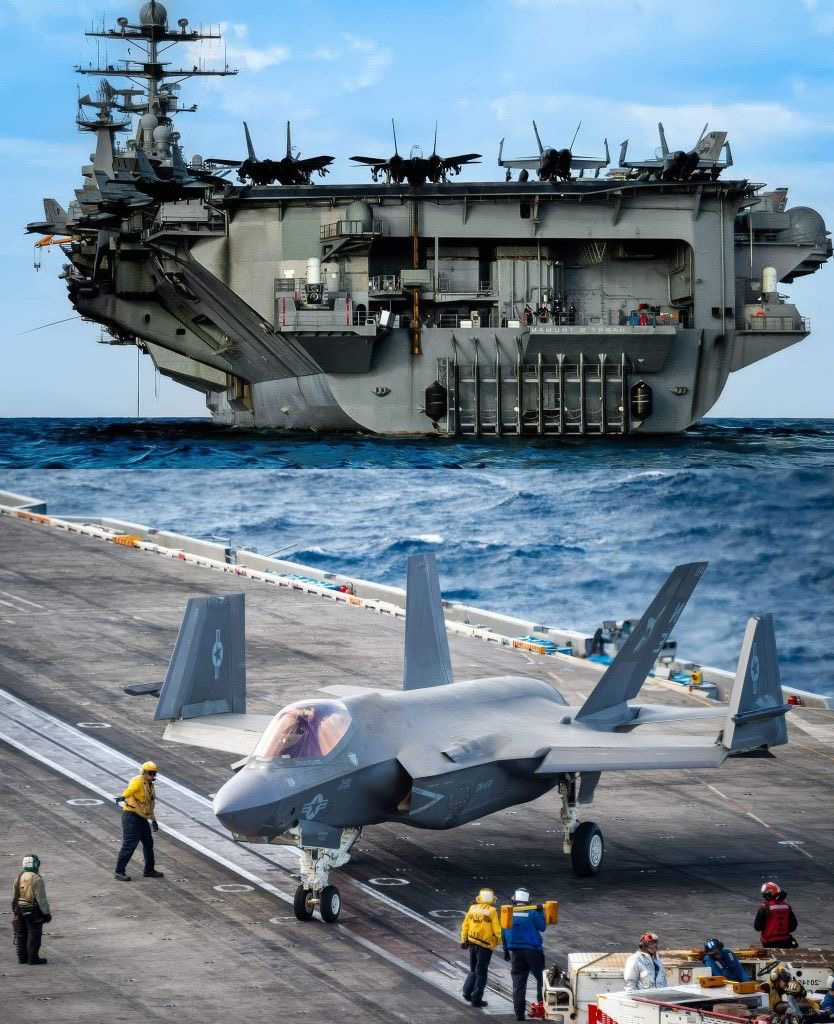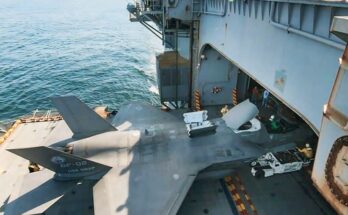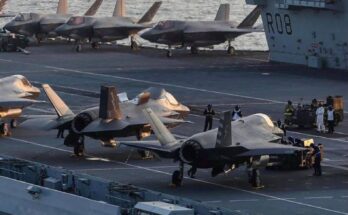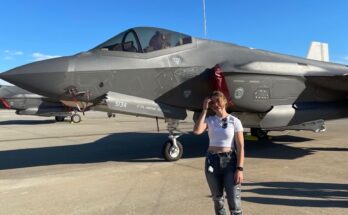
The Lockheed Martin F-35C Lightning II is the carrier-based variant of the Joint Strike Fighter program, designed specifically for the U.S. Navy’s fleet operations. As the largest of the three F-35 versions, the F-35C was built with the ruggedness and endurance required for catapult launches, arrested landings, and the demanding environment of aircraft carriers. It combines fifth-generation stealth, advanced sensors, and multirole versatility with the unique features necessary for naval aviation.
One of the defining characteristics of the F-35C is its enlarged wingspan compared to the F-35A and F-35B. The wings are approximately 43 feet wide, giving the aircraft greater lift and stability during low-speed operations such as carrier landings. The wings also fold at the tips, saving valuable deck and hangar space on crowded carriers. Along with stronger landing gear, a tailhook system, and reinforced structures, these modifications allow the F-35C to survive the stresses of repeated carrier operations without sacrificing performance.
The F-35C entered service with the U.S. Navy in 2019, after an extended development and testing period. It reached initial operational capability in 2021 and has since been deployed aboard American carriers, operating alongside traditional strike fighters like the F/A-18E/F Super Hornet. While the Super Hornet remains vital, the F-35C represents a leap forward by providing stealth and advanced data-sharing to the Navy’s air wings.
Central to the F-35C’s effectiveness is its sensor fusion. The aircraft gathers data from its radar, infrared sensors, and electronic warfare systems, presenting pilots with a unified picture of the battlespace. This information can also be shared with other aircraft, ships, and ground units, multiplying the effectiveness of the entire strike group. In this sense, the F-35C is not just a fighter, but a node in a larger networked force.
The jet’s stealth design makes it difficult for enemy radar to detect, giving carrier strike groups a critical edge in contested environments. By approaching undetected, the F-35C can strike targets, provide targeting data for other aircraft, or carry out reconnaissance missions. It can carry weapons both internally to maintain stealth, and externally when low observability is less critical.
The F-35C is also designed for range. Its larger wings allow it to carry more fuel than the other F-35 variants, extending its operational reach—a key advantage when carriers may need to launch aircraft from farther away to avoid enemy threats. This makes the F-35C well suited for operations in the vast Pacific theater, where distance is a major consideration.
Like the rest of the F-35 family, the C variant has faced challenges. Development delays, cost overruns, and sustainment expenses have drawn criticism. Carrier testing also revealed difficulties with the tailhook system early on, which had to be redesigned before the aircraft could be certified. Despite these setbacks, the Navy considers the F-35C essential for maintaining air superiority and striking capability well into the future.
Looking ahead, the F-35C will play a central role in carrier air wings for decades. As adversaries develop advanced air defenses and long-range weapons, the combination of stealth, sensor integration, and range provided by the Lightning II ensures that American carriers remain relevant in high-end conflict. The F-35C is more than an aircraft—it is a critical component of how the U.S. Navy projects power across the globe.


